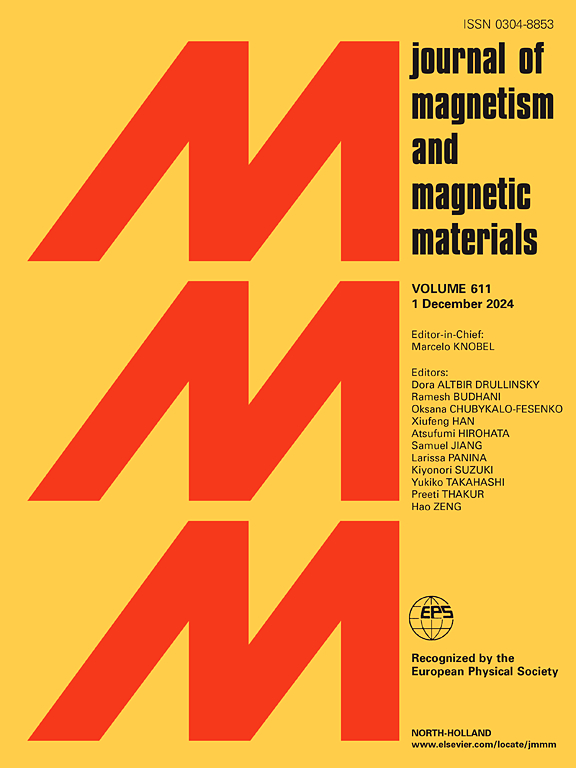基于可控磁场的静电纺丝纳米纤维技术的作用研究
IF 2.5
3区 材料科学
Q3 MATERIALS SCIENCE, MULTIDISCIPLINARY
引用次数: 0
摘要
纳米纤维的直径小于细胞和薄膜材料场的直径。在医学领域,纳米纤维具有模拟天然细胞外基质的结构和生物学功能,为人体组织和器官的修复提供了可能。随着新能源电池的发展,电池隔膜材料的制备作为有效减小纳米纤维直径,成为提高纳米纤维过滤器过滤性能的有效途径。通过对纳米纤维微观结构的精确调控,通过较低的表面能与材料结合,最终获得了具有超疏水性能的材料。利用MEMS,纳米纤维具有更高的比表面积和微观孔隙率,增加了微纳传感材料与被测柔性薄膜材料的相互作用面积,大大提高了传感器的性能。根据交变磁-电场耦合技术旋转方向的设计参数,对耦合场特性进行了数值分析。为观察静电纺丝实验机上的纺丝取向特性,设计了滚筒收集装置。通过SEM表征研究了不同工艺参数下的纺丝取向特性。实验结果表明,在交变磁场-电场耦合环境下,自旋具有较好的定向性。施加不同磁场值为1.4 (mT)、3.55 (mT)、4.6 (mT)、5.3 (mT)、8.5 (mT)的沉积区域和区域。本项目所述时谐“磁-电场”耦合静电纺丝机在静电纺丝的受控磁场技术基础上增加了磁控制模块和同步模块,既保留了静电纺丝原有的技术优势,又弥补了静电纺丝随机性和稳定性差的缺点。而且,通过稳定性的提高,原材料成本和维护成本将进一步降低。因此,本项目采用的新技术、新产品在横向和纵向比较上都具有技术潜力。本文章由计算机程序翻译,如有差异,请以英文原文为准。

Investigation into the role of electrospinning nanofiber technology based on controlled magnetic-electric field
The diameter of nanofibers as smaller than that of the cells and thin film material field. In the field of medicine, nanofibers with simulate the structure and biological function of natural extracellular matrix, providing the possibility for human tissue and organ repair. With the new energy batteries, the preparation of battery separator materials as effectively reduce the nanofibers diameter and become an effective way to improve the filtration performance of nanofibers filters. By precisely regulating the micro-structure of the nanofibers and combining with the material via lower surface energy, the material with super hydrophobic properties as finally obtained. With MEMS, nanofibers have the higher specific surface area and microscopic porosity, which as increase the interaction area between the micro and nano sensing material and the flexible film material as-detected, and greatly improve the sensor performance. Based on the design parameters of the spinning orientation of alternating magnetic-electric field coupling technology, the characteristics of the coupling field were analyzed numerically. The drum collection device was designed for electrostatic spinning experimental machine to observe the orientation characteristics of spinning. The spinning orientation characteristics under different process parameters were studied by SEM characterization. The experimental results show that the spinning has better orientation in alternating magnetic-electric field coupling environment. The deposition area and region applying various magnetic field values as 1.4 (mT), 3.55 (mT), 4.6 (mT), 5.3 (mT), 8.5 (mT). The time-harmonic “magnetic-electric field” coupling electrostatic spinning machine described in this project adds the magnetic control module and the synchronous module to the controlled magnetic-electric field technology of electrostatic spinning, which retains with original technical advantages of electrostatic spinning and makes up for the disadvantages of randomness and poor stability of electrostatic spinning. Moreover, through the improvement of stability, the cost of raw materials and maintenance costs will be reduced in the further. Therefore, the new technologies and products adopted in this project have technical potential in both horizontal and vertical comparison.
求助全文
通过发布文献求助,成功后即可免费获取论文全文。
去求助
来源期刊

Journal of Magnetism and Magnetic Materials
物理-材料科学:综合
CiteScore
5.30
自引率
11.10%
发文量
1149
审稿时长
59 days
期刊介绍:
The Journal of Magnetism and Magnetic Materials provides an important forum for the disclosure and discussion of original contributions covering the whole spectrum of topics, from basic magnetism to the technology and applications of magnetic materials. The journal encourages greater interaction between the basic and applied sub-disciplines of magnetism with comprehensive review articles, in addition to full-length contributions. In addition, other categories of contributions are welcome, including Critical Focused issues, Current Perspectives and Outreach to the General Public.
Main Categories:
Full-length articles:
Technically original research documents that report results of value to the communities that comprise the journal audience. The link between chemical, structural and microstructural properties on the one hand and magnetic properties on the other hand are encouraged.
In addition to general topics covering all areas of magnetism and magnetic materials, the full-length articles also include three sub-sections, focusing on Nanomagnetism, Spintronics and Applications.
The sub-section on Nanomagnetism contains articles on magnetic nanoparticles, nanowires, thin films, 2D materials and other nanoscale magnetic materials and their applications.
The sub-section on Spintronics contains articles on magnetoresistance, magnetoimpedance, magneto-optical phenomena, Micro-Electro-Mechanical Systems (MEMS), and other topics related to spin current control and magneto-transport phenomena. The sub-section on Applications display papers that focus on applications of magnetic materials. The applications need to show a connection to magnetism.
Review articles:
Review articles organize, clarify, and summarize existing major works in the areas covered by the Journal and provide comprehensive citations to the full spectrum of relevant literature.
 求助内容:
求助内容: 应助结果提醒方式:
应助结果提醒方式:


